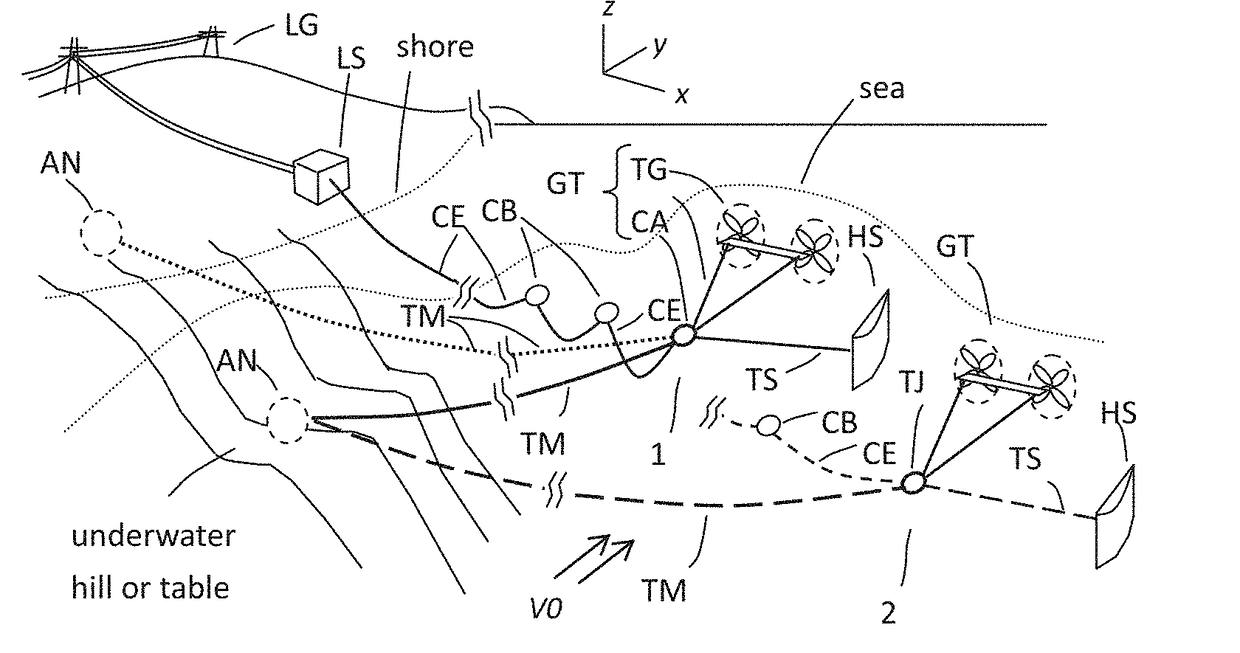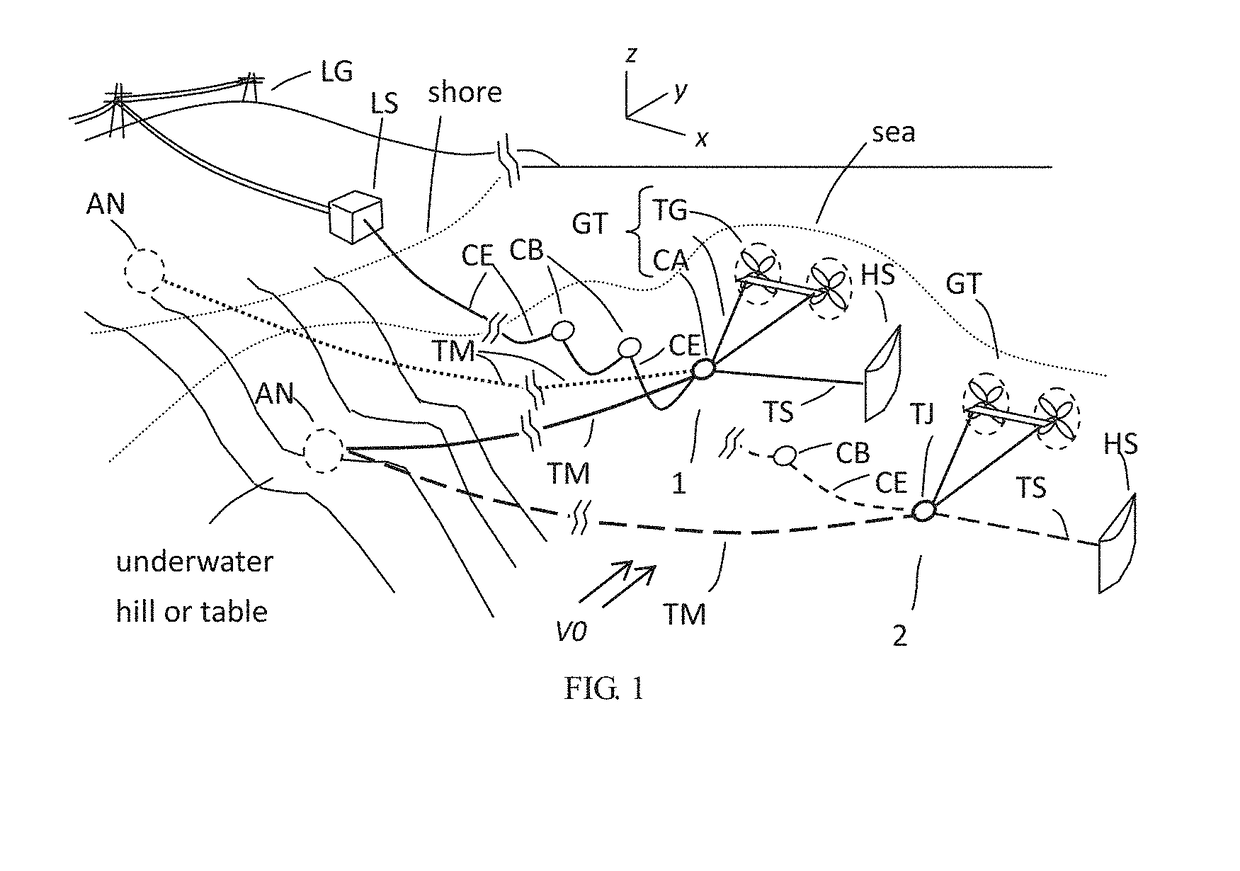Mooring System and Method
a technology of mooring system and mooring system, which is applied in the direction of special-purpose vessels, vessel construction, machines/engines, etc., can solve the problems of affecting the efficiency of the power system the practical and cost-effective system, and the difficulty of harnessing the power of the ocean current, etc., to achieve easy transportation, prolong the lateral displacement capacity, and ease the effect of depth problems
- Summary
- Abstract
- Description
- Claims
- Application Information
AI Technical Summary
Benefits of technology
Problems solved by technology
Method used
Image
Examples
Embodiment Construction
[0076]In the following description, specific details are presented to provide a thorough understanding of the embodiments of the present disclosure. Persons of ordinary skill in the art will recognize, however, that the present disclosure can be practiced without one or more of the specific details, or in combination with other components. Well-known implementations or operations are not shown or described in detail to avoid obscuring aspects of various embodiments of the present disclosure.
[0077]Basic Analytical Model
[0078]In accordance with an exemplary embodiment of the present disclosure, FIG. 1 illustrates the basic concept of the Cross-stream Active Mooring (CSAM) in perspective view. The mooring system comprises a main tether TM, an anchoring point AN at one end of the main tether TM and a hydro sail HS attached to the other end. The hydro sail HS is basically a wing (or sail) profile with its span oriented roughly in vertical direction. The hydro sail HS and most of the main...
PUM
 Login to View More
Login to View More Abstract
Description
Claims
Application Information
 Login to View More
Login to View More - R&D
- Intellectual Property
- Life Sciences
- Materials
- Tech Scout
- Unparalleled Data Quality
- Higher Quality Content
- 60% Fewer Hallucinations
Browse by: Latest US Patents, China's latest patents, Technical Efficacy Thesaurus, Application Domain, Technology Topic, Popular Technical Reports.
© 2025 PatSnap. All rights reserved.Legal|Privacy policy|Modern Slavery Act Transparency Statement|Sitemap|About US| Contact US: help@patsnap.com



